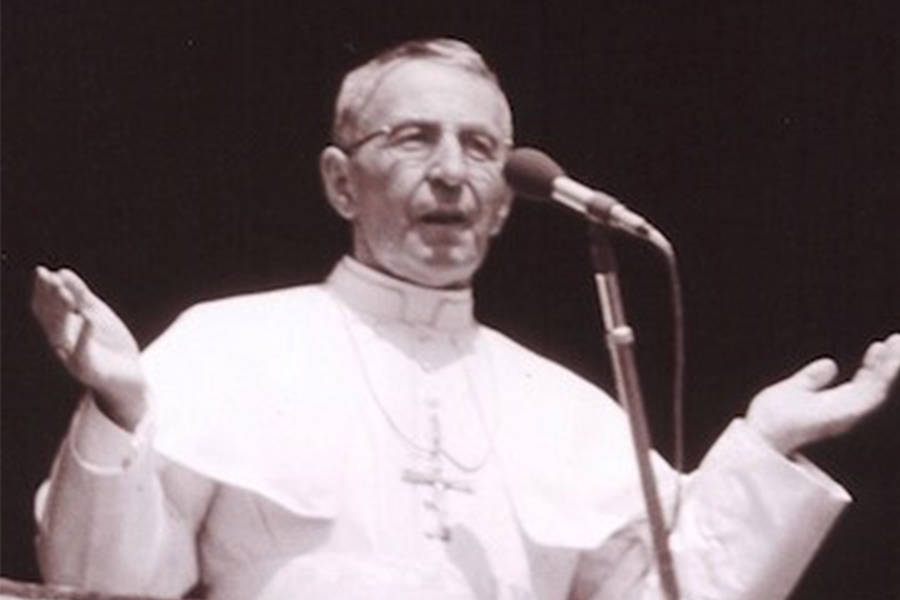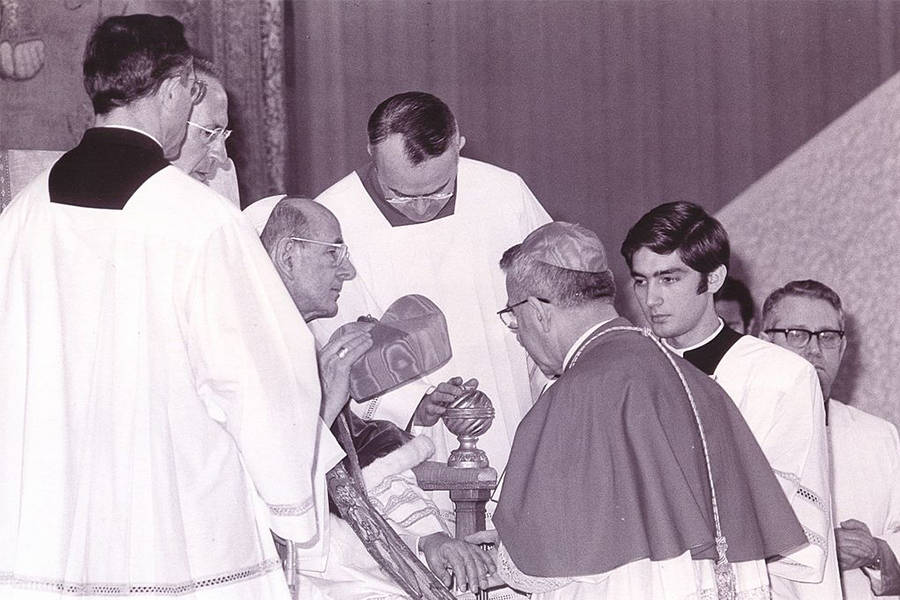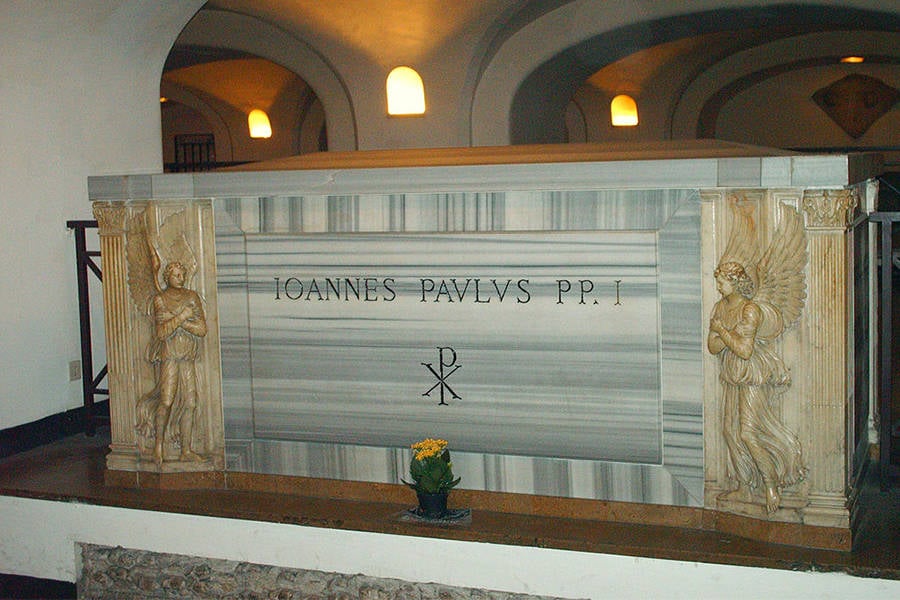Pope John Paul I's death remains a point of contention even 40 years later.

Wikimedia CommonsPope John Paul I
In 1978, Pope Paul VI died. As is Vatican custom, the College of Cardinals went into the conclave and began to decide who would be the next pope. It was the largest papal conclave in history and the first since 1721 in which three future popes participated. After the fourth ballot was submitted, Cardinal Albino Luciani was elected as the next Bishop of Rome.
Despite the fact that he had repeatedly claimed he would refuse the papacy, should it be offered to him, Luciani accepted the position and assumed the name Pope John Paul I. “May God forgive you for what you have done,” he said upon his acceptance. His words would hang eerily over his papacy, as just 33 days later, the College would be holding their second conclave of the year after Pope John Paul I died suddenly and under increasingly mysterious circumstances.
The Brief Reign Of The Smiling Pope
When Pope Paul VI died, the College of Cardinals hoped that they would find a friendlier one than he had been. They hoped the new pope would be more approachable, and give the papacy a warmer air than it had given off in the past.
They got their wish with Pope John Paul I. Dubbed “the Smiling Pope” by his people, and known for his humor and good-natured attitude, John Paul I (also the first to refer to himself as “the first”) became an instant favorite, especially amongst the younger members of the Catholic church.
However, rumors quickly arose that there was discontent about the choice within the College of Cardinals. Some rumors suggested that certain members of the college had pushed for a more conservative voice, and were unhappy with such a modern, open candidate. Others suggested that Pope John Paul I wasn’t “papabile,” or didn’t have the personal qualifications for the job.
Nonetheless, the first few weeks of John Paul I’s papacy went smoothly and were without incident.
The Sudden Death Of Pope John Paul I

Wikimedia CommonsPope John Paul I, then Albino Luciani, at his ordination ceremony.
On the morning of Sept. 29, 1978, Sister Vicenza entered the pope’s room to check on him, after noticing that he had yet to come out for his morning coffee. To her horror, she found him dead in his bed. She quickly summoned another sister to confirm what she’d found, a younger nun named Sister Margherita. Both nuns reported that the pope’s skin was cold and that his nails were surprisingly dark.
The official report claimed that Pope John Paul I was found “lying in his bed, with a book opened beside him, and the reading light on.” The official cause of death, according to a Vatican doctor, was a heart attack, occurring around 11 p.m.
Conspiracy Theories Surrounding Pope John Paul I’s Death
However, before the report was released conspiracy theories started swirling. Within hours, based on inconsistencies in reports, rumors that he had been sick began surfacing, along with talk that he had been in the midst of a revolution. The most outlandish rumors stated that he had been murdered.
Almost immediately after the announcement that he had died from a heart attack, people began to doubt it. He had never given any indication that he had been sick, and even the nurses who discovered him were shocked to learn that he’d had a heart condition. He had allegedly been taking anticoagulants, though they were being taken for a non-life-threatening illness. The more that a heart attack was touted, the less the public believe it.
Of course, in line with Vatican law, an autopsy was never performed. After death, pope’s bodies are allowed to be embalmed, though autopsies are considered a desecration of the body and thus illegal.

Wikimedia CommonsPope John Paul I’s tomb in St. Peter’s Basilica.
The fact that the body was never autopsied resulted in dozens of conspiracy theories about the legitimacy of his heart condition surfacing.
Due to previous rumors that he had been unliked by the more conservative Cardinals, whispers that the pope had been assassinated began to surface. However, one of the most compelling claims came a few years after and went even deeper than discrepancies among his fellow Cardinals.
A few years after his death, British crime writer David Yallop published a book titled In God’s Name which suggested that Pope John Paul I had been murdered, and had been in danger ever since he was elected.
Yallop claims that the pope was aware of corruption within the Vatican Bank and that that was the reason he was killed. He states that when the pope’s body was found, he’d had a note crumpled in his hand with the names of bank members that were involved in Freemasonry, which is strictly banned within the Catholic Church.
While the Vatican Bank was, without a doubt, corrupt, there was no evidence that the bank’s staff was involved in Freemasonry. Still, Yallop continues to point out that the Vatican has never confirmed or denied the existence of the note.
Today, the official cause of death remains a heart attack, though rumors continue to swirl around the Smiling Pope, his unusually short papacy, and his mysterious and unsolved death.
Next, check out the Palmarian Church, a strange Catholic sect. Then, read about the craziest popes in history.





